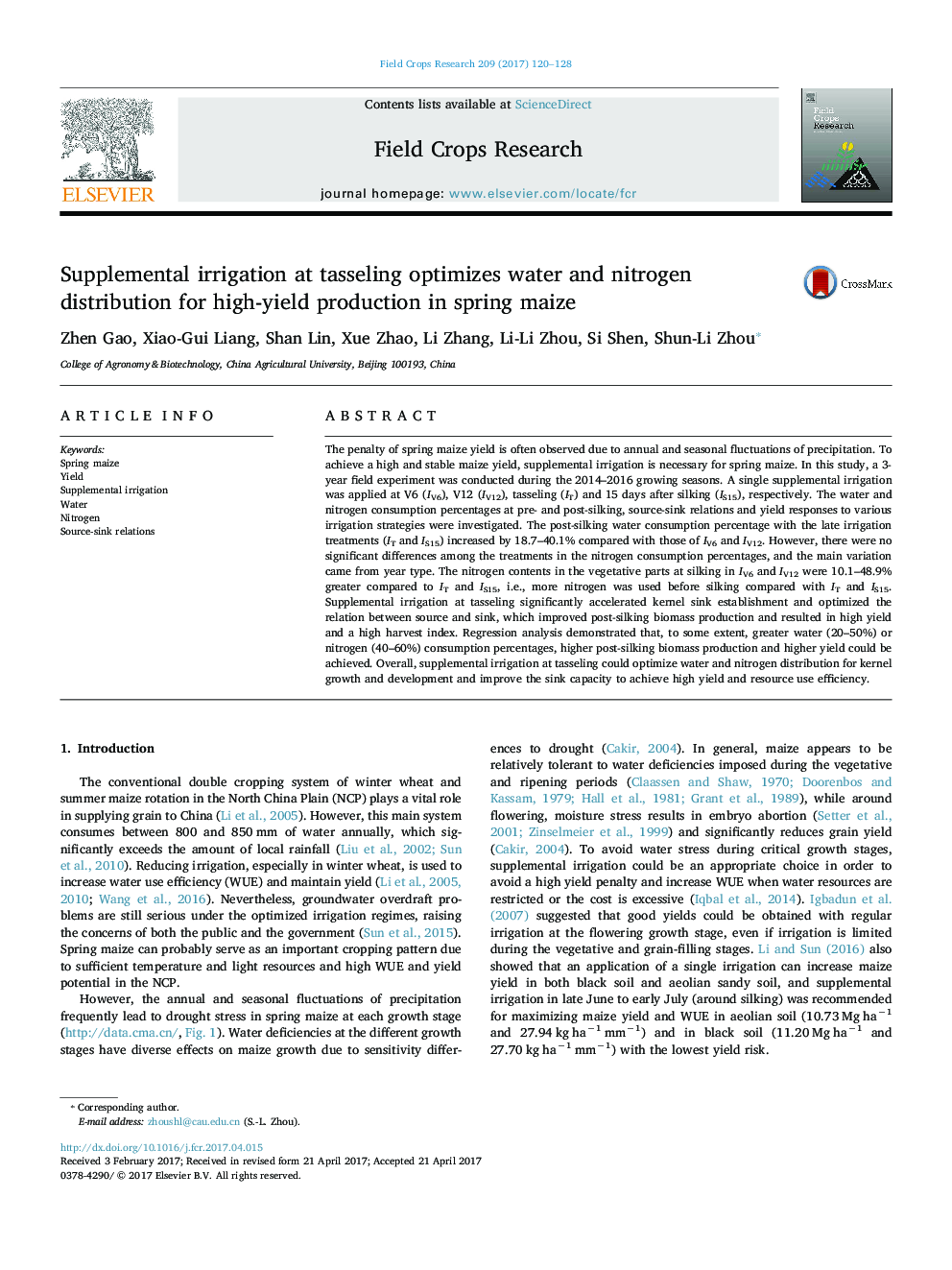| Article ID | Journal | Published Year | Pages | File Type |
|---|---|---|---|---|
| 5761508 | Field Crops Research | 2017 | 9 Pages |
Abstract
The penalty of spring maize yield is often observed due to annual and seasonal fluctuations of precipitation. To achieve a high and stable maize yield, supplemental irrigation is necessary for spring maize. In this study, a 3-year field experiment was conducted during the 2014-2016 growing seasons. A single supplemental irrigation was applied at V6 (IV6), V12 (IV12), tasseling (IT) and 15 days after silking (IS15), respectively. The water and nitrogen consumption percentages at pre- and post-silking, source-sink relations and yield responses to various irrigation strategies were investigated. The post-silking water consumption percentage with the late irrigation treatments (IT and IS15) increased by 18.7-40.1% compared with those of IV6 and IV12. However, there were no significant differences among the treatments in the nitrogen consumption percentages, and the main variation came from year type. The nitrogen contents in the vegetative parts at silking in IV6 and IV12 were 10.1-48.9% greater compared to IT and IS15, i.e., more nitrogen was used before silking compared with IT and IS15. Supplemental irrigation at tasseling significantly accelerated kernel sink establishment and optimized the relation between source and sink, which improved post-silking biomass production and resulted in high yield and a high harvest index. Regression analysis demonstrated that, to some extent, greater water (20-50%) or nitrogen (40-60%) consumption percentages, higher post-silking biomass production and higher yield could be achieved. Overall, supplemental irrigation at tasseling could optimize water and nitrogen distribution for kernel growth and development and improve the sink capacity to achieve high yield and resource use efficiency.
Related Topics
Life Sciences
Agricultural and Biological Sciences
Agronomy and Crop Science
Authors
Zhen Gao, Xiao-Gui Liang, Shan Lin, Xue Zhao, Li Zhang, Li-Li Zhou, Si Shen, Shun-Li Zhou,
